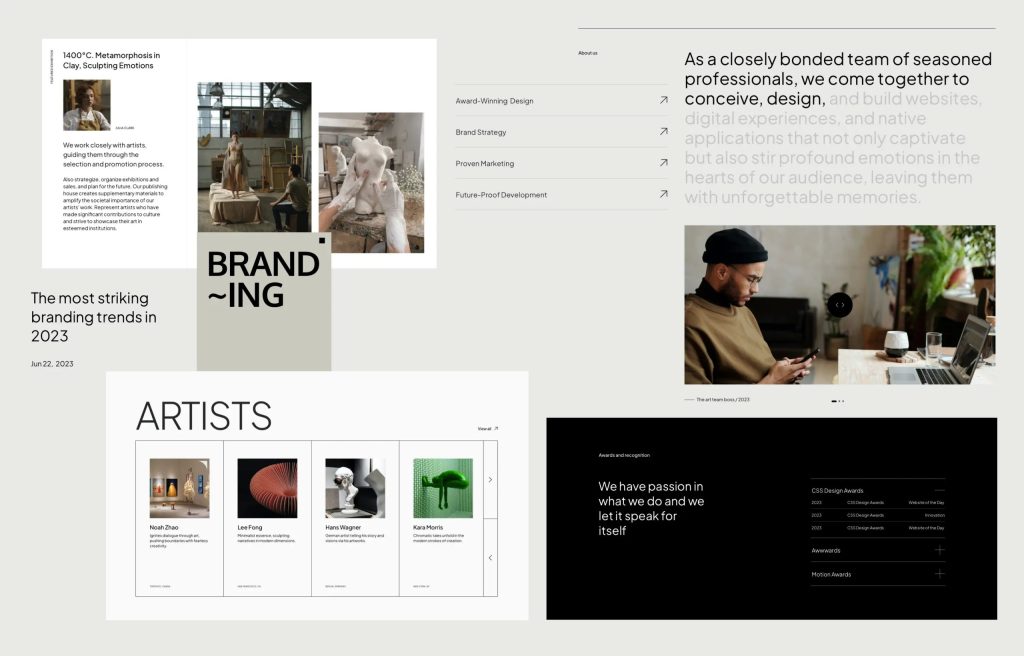Overview: What an AIOS means in practice
The term AIOS—an AI Operating System—describes a software and operational stack built to embed AI into core business processes, not just as a feature but as a platform-level capability. When your strategic objective is to convert AI into recurring revenue or cost reduction at scale, you are building AIOS AI-optimized business models: an interplay of models, data, orchestration, and governance that reliably produces business outcomes.
This article walks three audiences at once. Beginners will get plain-language analogies and scenarios that explain the idea. Developers and architects will find an architecture teardown, integration patterns, and operational trade-offs. Product leaders will see ROI calculations, vendor comparisons, and a concrete case study in AI smart energy grids.
Why an AIOS matters — simple scenarios
Imagine a city utility that must balance supply and demand in real time. A basic dashboard helps humans make decisions; an AIOS automates policies, triggers purchases, and optimizes storage with minimal human intervention. For a customer support organization, an AIOS can route inquiries, draft responses, and escalate high-risk cases while tracking outcomes for continuous improvement.
The key difference is that an AIOS treats AI as a platform service: models are first-class citizens, observability is baked in, and decision loops are automated. That shift changes how teams are organized, how ROI is measured, and how risk is governed.
Core architecture patterns
There are several architecture patterns that recur in effective AIOS implementations. Understanding them helps you pick tools and design trade-offs.
1. Event-driven orchestration
Best for high-throughput, asynchronous decisions. Events (sensor readings, user actions, webhooks) flow through an event bus to processors and model inference services. Orchestration engines like Kafka, Pulsar, or cloud-native event gateways coordinate workflows. Temporal and Argo Workflows are common choices for durable, versioned workflows.
Trade-offs: excellent scalability and decoupling, but introduces eventual consistency and higher debugging complexity.
2. Synchronous API-led flows
Suitable for low-latency interactions (e.g., chat assistants). A request passes through API gateways to model inference endpoints (managed model APIs or self-hosted serving like Ray Serve or BentoML). This pattern is simpler to reason about but can be costlier for heavy inference workloads and requires careful rate-limiting.
3. Modular agent pipelines
Instead of monolithic agents, modular pipelines chain specialized skills: retrieval, ranking, planning, execution. Frameworks like LangChain, custom orchestrators, and model registries support this design. It improves testability and governance but requires well-defined interfaces and data contracts.
Integration and API design considerations
APIs in an AIOS must expose not only model inference but also metadata: model version, confidence, context, and provenance. Design decision points include synchronous vs asynchronous endpoints, contract-based schemas for events, and idempotency for retries.
Consider adding a standardized response wrapper that includes: prediction, confidence, attribution (features used), model_id, and model_hash. Those fields make downstream auditing and rollback easier and are critical for compliance in regulated industries.
Deployment and scaling: managed vs self-hosted
There is no universal answer. Managed platforms (OpenAI, Hugging Face Inference API, cloud ML services) reduce operational burden and accelerate time-to-market. Self-hosted stacks (Kubernetes with Istio, Ray, Temporal, Argo, or custom servers) provide control over latency, cost, and regulatory compliance.
- Managed: faster onboarding, predictable SLAs, but higher per-inference costs and potential data residency concerns.
- Self-hosted: lower marginal inference cost at scale, tuning control, and ability to use specialized hardware; however, you must manage autoscaling, GPU fleets, security patches, and model lifecycle tooling.
Observability, metrics, and monitoring signals
A production AIOS emits telemetry at three levels: infrastructure, model, and business.
- Infrastructure: CPU/GPU utilization, queue lengths, pod restarts, and tail latency percentiles (p50, p95, p99).
- Model: prediction distribution, confidence histograms, drift signals (feature and label drift), and model version adoption rates.
- Business: conversion rates, error costs, manual override frequency, and end-to-end latency from event to action.
Practical alerting rules include sudden shifts in prediction distribution, increased tail latency beyond SLO, and rising manual interventions. Consider error budgets for models similar to software SLOs.
Security and governance best practices
AIOS implementations need layered security measures and clear governance. Key controls:
- Strong identity and access controls for model publishing and invocation.
- Encrypted data at rest and in transit, and strict data minimization for inference payloads.
- Model registries with signing and provenance; immutable artifacts help audits.
- Human-in-the-loop gates for high-risk decisions and clearly defined escalation paths.
- Explainability tools and logging of reasons for decisions, especially where regulation requires justification.
Operational failure modes and mitigation
Common failure modes include cascading timeouts (downstream services slow), silent model drift, data contract changes, and noisy feedback loops. Mitigations:
- Implement retries with backoff and circuit breakers for downstream calls.
- Run shadow deployments and canary models to detect regressions before full rollout.
- Maintain clear schema versioning for events and inputs to avoid silent failures.
- Monitor business KPIs closely and tie them back to model telemetry.
Product and market considerations: ROI and vendor comparison
Translating AI into business returns is about frequency, value-per-decision, and confidence. A decision worth $0.01 executed 100 million times monthly is more valuable than a $100 decision executed monthly. When evaluating vendors, ask:
- How are costs modeled? Per-inference, per-token, or instance-hour pricing changes incentives.
- Can the vendor meet data residency and compliance needs?
- What automated governance and audit capabilities are included?
- How easy is it to integrate with your orchestration layer (Temporal, Argo, Step Functions) and telemetry stack?
Example comparisons: cloud-managed inference services (AWS SageMaker, GCP AI Platform) streamline model ops at the expense of less runtime flexibility; model-hosting startups and open-source stacks (Ray, BentoML, TorchServe) give lower-level control and cost optimization options.
Case study: AI smart energy grids
Consider a regional utility implementing an AIOS to optimize grid balancing. Requirements: strict latency for demand response, regulatory audit trails, integration with SCADA, and a need to combine weather forecasts with historical load.
Architecture choices that worked for one large utility:
- Event-driven ingestion from IoT sensors into a time-series store and streaming bus.
- Feature pipelines that precompute rolling statistics and feed both real-time and batch models.
- Hybrid model hosting: short-term forecasting models on a self-hosted GPU cluster for low-latency predictions, and larger scenario models run in managed cloud for heavy simulations.
- Temporal-based orchestration to ensure durable workflows for emergency dispatch and rollback safety checks.
- Human-in-the-loop approvals for actions with an economic impact above a set threshold.
Outcome: reduced peak purchase costs by enabling better storage dispatch and demand response. The ROI calculation included measurable cost savings on energy purchases and deferred capital expense on peaker plants.
Tooling and open-source signals
Useful projects and patterns to watch:
- Orchestration and workflow: Temporal, Argo Workflows, Apache Airflow.
- Model serving: Ray Serve, BentoML, TorchServe, Hugging Face Inference.
- Agent frameworks and pipelines: LangChain-style orchestration for modular skills.
- MLOps and registries: MLflow, Metaflow, and Kubeflow components for model lifecycle management.
You may also leverage large model APIs such as GPT-3.5 for assistant-style interactions, while keeping critical inference on private models for compliance and cost control. Many teams adopt hybrid strategies: use GPT-3.5 for exploratory or low-risk tasks and move stable high-volume flows to optimized local models.
Implementation playbook (step-by-step in prose)
1) Start with a clear decision inventory: list decisions, frequency, value, and risk. Prioritize low-risk, high-frequency automations.
2) Build minimal pipelines: ingest, feature compute, model prototype. Use managed services for fast prototyping and keep interfaces clean so you can swap implementations.
3) Add orchestration and durable workflows. For production reliability choose a workflow engine that supports retries, human tasks, and versioning.
4) Implement observability early: collect model metrics and map them to business KPIs.
5) Harden governance: model registry, approval gates, and signed releases for models and feature transforms.
6) Expand gradually, moving high-volume flows to optimized serving while keeping a safety net of fallbacks and human overrides.
Risks and regulatory considerations
Legal and policy frameworks are evolving. Regulations such as data protection laws and sector-specific rules for utilities or finance will influence where and how you host models and data. Explainability requirements may force simpler models or specially designed explainers.

Operationally, beware of feedback loops where automated decisions change the input distribution, causing model degradation. Implement continuous evaluation and conservative rollback strategies.
Future outlook
Expect more composable stacks: plug-and-play model registries, standardized decision APIs, and stronger tools for drift detection. Standards for model provenance and signed artifacts will become more important as regulators and enterprises demand auditability.
Toolchains will continue to integrate capabilities from open-source and managed services. Large language model APIs like GPT-3.5 will remain important for certain tasks but will increasingly coexist with purpose-built models in a hybrid AIOS.
Key Takeaways
Building an AIOS AI-optimized business models is as much an organizational and product question as a technical one. Focus on decision value, observable feedback loops, and governance. Choose architecture patterns—event-driven, synchronous, or modular pipelines—based on latency, throughput, and compliance needs. Evaluate managed and self-hosted trade-offs in cost and control. Use robust observability and model registries to reduce operational risk. Finally, practical pilots in domains like AI smart energy grids demonstrate how measurable ROI emerges when architecture, data, and processes align.
